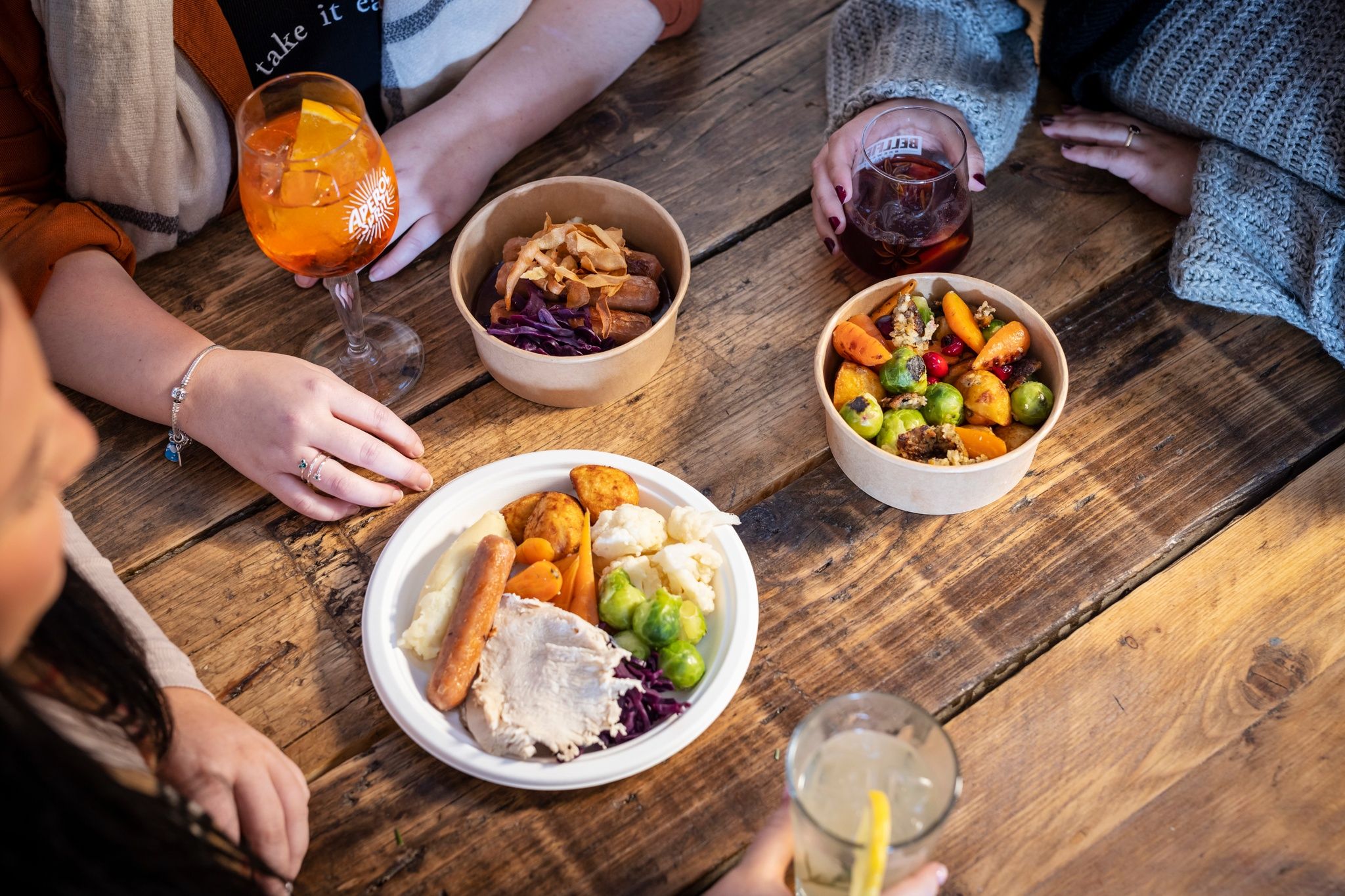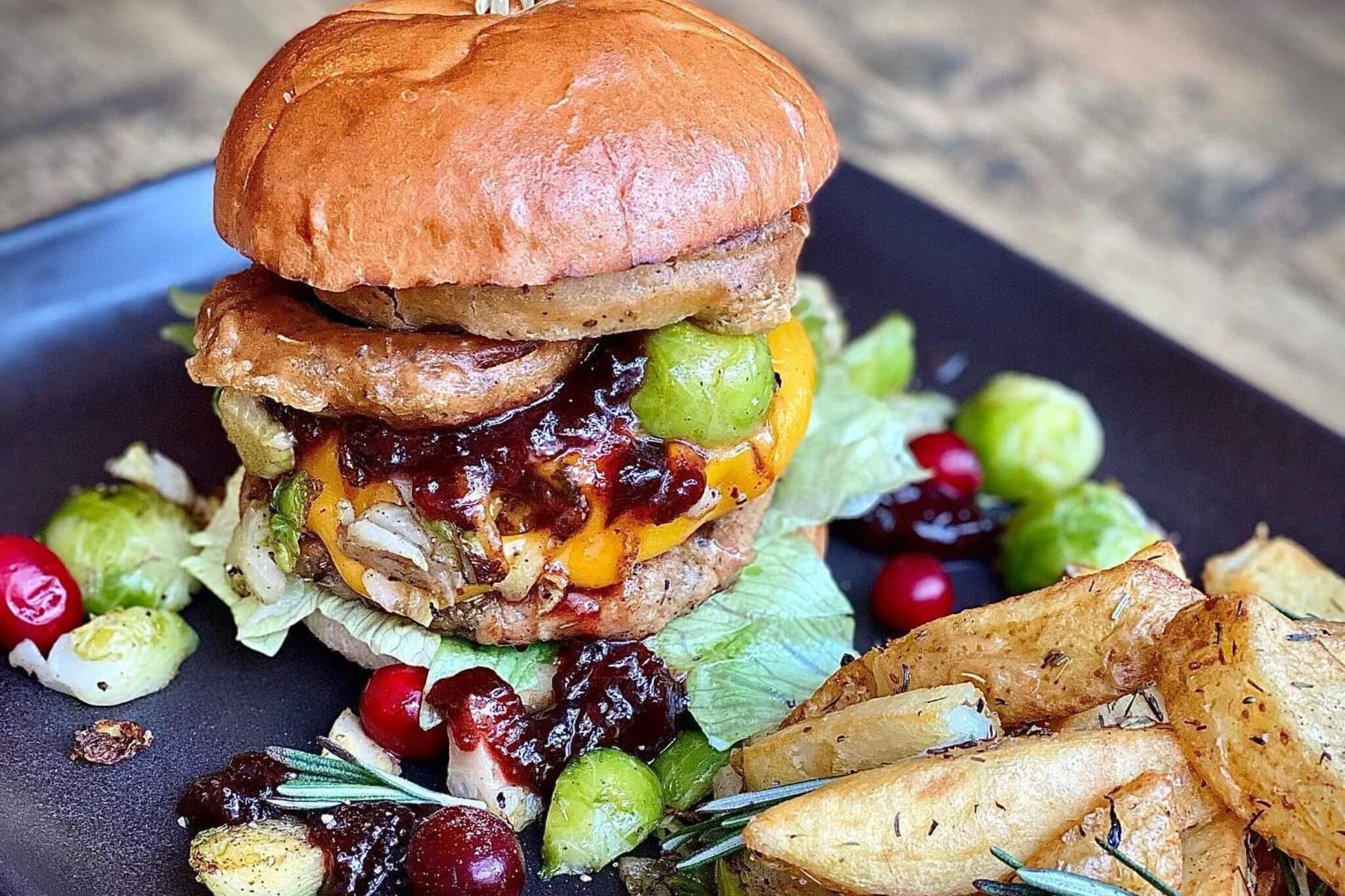- Home
- Things to do
- Food & Drink
- 11 Traditional Scottish food dishes to try
11 Traditional Scottish food dishes to try
Scotland is surrounded by plentiful seas and boasts fertile lands, meaning we can grow natural produce on our doorstep for restaurants and our homes. Scotland is home to some incredible varieties of food which can be served throughout breakfast, lunch and dinner, from succulent seafood and traditional hearty haggis to tasty desserts including cranachan. Check out what Scotland’s larder has to offer.
The following list was created by VisitScotland to showcase a range of experiences. It isn’t ranked in any specific order.
- 1
Scottish porridge
For breakfast
Porridge
© @lowra_eats_well
Did you know that porridge comes from Scotland? These humble oats have been part of a staple breakfast diet since around 600 AD, with traces of barley porridge found in 2,500-year-old pots excavated from the Outer Hebrides. The preparation of porridge can vary but the traditional recipe consists of oats, water and a pinch of salt. For a creamier consistency, it can be mixed with milk and water together and was traditionally stirred with a spurtle (a wooden kitchen tool).
Today, you’ll find porridge on the menu in local B&Bs, hotels and youth hostels across Scotland. It's usually served hot with various toppings including brown sugar, fresh fruit, jam, honey or even a dash of whisky! Full of fibre, vitamins and minerals, a bowl of Scottish porridge will help keep your energy levels up for a day of sightseeing.
Places to try Scottish porridge:
Contini on George Street, Edinburgh
Food Story Café, Aberdeen
Bridgeview Station Restaurant, Dundee
- 2
Full Scottish breakfast
For breakfast, brunch or all-day
Scottish breakfast
© @thezensualhealer
You can’t go wrong with a hearty, full Scottish breakfast. Varying from place to place, this dish will set you up for a grand day out exploring Scotland’s sights. For our veggie friends, you don’t have to miss out on all the fun. Many restaurants will happily swap some items with delicious meat-free alternatives. On your plate, you’ll typically find fried eggs, toast, bacon, baked beans, hash browns, sausages, black pudding, tattie scones, mushrooms and fried tomatoes.
Haggis can also be included as an alternative to black pudding. It consists of sheep’s heart, liver and lungs, mixed with onions, oatmeal, suet and spices. Vegetarian haggis is just as delicious, retaining most of the flavours and textures of a meat-based haggis.
Places to try a full Scottish breakfast include:
Gloagburn Farm Shop, Perth
The Shore, Arran
The Loft Café & Bakery, Haddington, East Lothian
- 3
Cullen skink
For starters
A bowl of Cullen Skink soup
This Scottish soup originates from the town Cullen in Moray, on the northeast coast. You might be surprised but the recipe for Cullen skink hasn’t always been the same, changing from a beef broth to a fish soup. It was originally made from scraps of beef from the front legs of cattle. In the early 1890s, many people couldn’t afford the luxury of beef and instead turned to the cost-effective ingredient of fish, an easy switch for the people of Cullen due to the town’s thriving production of smoked haddock. The rest, as they say, is history and it's become a beloved part of Scottish cuisine.
The dish is now made with smoked haddock, potatoes and onions and is served as a starter in many restaurants, cafés and at formal dinner parties. Did you know, the town even hosts an annual Cullen Skink World Championships? Participants go head-to-head where their soup is judged based on their consistency, colour, flavour, texture, aroma and presentation before the winner is announced.
Places to try Cullen skink:
Rockpool Cafe, Cullen
Lily’s Kitchen Cafe, Cullen
MacKays Hotel, Wick
- 4
Haggis, neeps and tatties
For the main course
Haggis, neeps and tatties
When you think of Scottish food, haggis always comes to mind. One of our most traditional and famous dishes is haggis, neeps and tatties (Scottish words for turnips and potatoes), a delicious combination of meat, oatmeal, onions, salt and spices. Although there were references to haggis-like dishes found in English and Scottish poetry and literature dating back as early as the 1400s, Scotland’s love for haggis began in 1786 when Robert Burns wrote ‘Address to a Haggis’. These days haggis is often made in a synthetic casing instead of a sheep's stomach and forms an integral part in Burns Night celebrations each year on 25 January, paying homage to Scotland’s National Bard. You can also find vegetarian haggis in many restaurants and supermarkets across Scotland, too. Invented in 1984 by John MacSween it includes beans, lentils, nuts, vegetables and oatmeal.
Places to try haggis:
The Grog and Gruel, Fort William
Ubiquitous Chip, Glasgow
- 5
Stovies
For the main course
Lamb stovies at The Amber Restaurant within The Scotch Whisky Experience.
© Amber Restaurant
Nothing beats a warm bowl of stovies, especially on a cold day. This simple but hearty dish packs a lot of flavour and is the ultimate Scottish comfort food. A traditional bowl of stovies is made up of potatoes, onions, beef dripping and leftover meat with many restaurants and pubs serving different variations of this classic recipe from roast beef, lamb, sausage and corned beef to vegetarian versions.
The name ‘stovies’ originates from the Scots word ‘stove’ which refers to slow-cooking, similar to stewing or braising, and derives from the French word ‘étuvé’. Stovies were traditionally made to use up leftover meat from Sunday roasts to avoid any waste and stretch meals further. Now, it can be found in many pubs and restaurants across Scotland and is often served with pickled beetroot or oatcakes on the side.
Places to try stovies:
Teuchters Landing, Edinburgh
Amber Restaurant & Whisky Bar, Edinburgh
- 6
Aberdeen Angus beef
For the main course
Medium rare cooked 8oz. fillet steak with chimichurri sauce
© Wildfire
Aberdeen Angus beef is one of our most prized and sought-after cuts of meat. Native to northeast Scotland, the Aberdeen Angus breed can be traced back as early as the 19th century and were locally known as ‘Doddies’ or ‘Hummlies’ due to them being a naturally hornless breed. Pioneers including Hugh Watson played key roles in its development through selective breeding and the overall quality of the meat. Thanks to its amazing source of iron, zinc and marbling of fat within the meat, it helps to enhance the flavour and juiciness with every bite when you order a delicious steak dinner or mouth-watering burger. This quality cut of beef can also be found in steakhouses around the world.
Places to try Aberdeen Angus beef:
The Falls of Feugh, Banchory, Aberdeenshire
Tarragon by Graham Mitchell, Aberdeen
Wildfire, Edinburgh
- 7
Scottish haddock
For the main course
MacGregors Bar, Inverness
You can’t beat a good Scottish chippy. Haddock is the most common fish when it comes to our beloved fish suppers. It is known for its mild, flaky texture and is battered and deep-fried until golden brown and crispy served with a portion of chips with salt and vinegar or if you’re from Edinburgh, salt and sauce – a mixture of vinegar and brown sauce. Some chippies may even offer a ‘special fish’ option if you prefer your haddock breadcrumbed instead of battered.
If you’re looking for a more sophisticated affair, our restaurants offer a variety of cooked haddock dishes from fish pie to kedgeree, a dish consisting of spicy curried rice, smoked haddock and soft boiled eggs.
Places to try Scottish haddock:
Anstruther Fish Bar, Fife
Tailend, St Andrews and Dundee
Mussel & Steak Bar, Edinburgh
- 8
Arbroath smokies
For the main course
Arbroath Smokies at Auchmithie
Despite its name, Arbroath smokies originated from the small fishing village of Auchmithie, a community once populated by families of Norse tradition who were renowned for their fish smoking methods. Legend has it that the tradition began when a fire broke out where the haddock was being preserved, resulting in smoked fish with locals enjoying its distinct and unique flavour. As Arbroath’s fishing industry declined, the town’s local council encouraged fishermen to move to Arbroath from Auchmithie offering them more land and an improved harbour which soon resulted in Arbroath’s booming fishing trade. Since then, the Arbroath smokie has become the town’s local delicacy, using freshly caught haddock from the North Sea.
To give its rich and perfectly smoky flavour, the fish are tied into pairs and salted overnight and are dried before being smoked over hardwood in a traditional ‘smokie pit’. They're then cooked until they reach a golden-copper colour.
Places to try Arbroath smokies:
The Old Brewhouse Restaurant & Bar, Arbroath
C Lyons Fresh Fish, Arbroath
The Old Boatyard Seafood Restaurant, Arbroath
- 9
Scottish langoustines
For the main course
A seafood platter at the Lobster Shop in Johnshaven, Aberdeenshire
We’ve got another seafood delight for you which is sure to be a catch. Langoustines are Scotland’s native prawn and are part of the crustacean family. Usually found in the North Sea and west coast of Scotland, langoustines live on the sea floor in muddy and sandy environments. Known for their sweet and succulent flavour, you’ll find langoustines as part of many seafood platters in restaurants and seafood shacks across Scotland. They can be enjoyed boiled or grilled with various dipping sauces.
Places to try Scottish langoustines:
The Lobster Shop, Aberdeenshire
Kishorn Seafood Bar, Highlands
The Ship on the Shore, Edinburgh
- 10
Clootie dumpling
For breakfast or dessert
Traditionally made Clootie Dumpling from Speyside Centre
© Speyside Centre
To finish off your meal, why not try a clootie dumpling? This traditional Scottish fruit pudding can be traced back to the 17th century and is made with flour, breadcrumbs, dried fruit (currants, raisins and sultanas), suet, sugar, spices and some milk to bind it together. The name ‘clootie dumpling’ comes from the Scottish word ‘cloot’ which refers to a ‘cloth’, as the mixture is wrapped in a floured cloth and boiled to help give its distinctive round shape and slightly crusty skin. It has also been compared to Christmas pudding, but a little less rich and you can eat it at any time of the year!
This Scottish cult classic remains popular for celebrations including Burns Night and Hogmanay and can be enjoyed both hot and cold, often served warm with custard, cream and ice cream or cold with a spread of butter and jam. Clootie dumplings can also be versatile if you have leftovers, making it a great addition to a cooked Scottish breakfast.
Places to try clootie dumpling:
The Clootie Dumpling Cafe, Dunkeld
Clootie Dumpling Restaurant, Speyside Centre
- 11
Cranachan
Scotland
Cranachan
Maybe one you haven’t heard of before, but this traditional Scottish dessert was originally a celebration of harvest, following the raspberry season in June. This dessert includes cream and fresh raspberries served up with Scottish oats and whisky. It has been called “the uncontested king of Scottish dessert”. Have a try and let us know what you think!
Places to try cranachan:
Applecross Inn, Applecross
Whiski Rooms, Edinburgh
Cranachan, Glasgow
Find experiences
JavaScript needs to be enabled to see this product search form. You can turn this on in your browser settings.
Other things you might like
Scottish food & drink
9 Top Scottish food experiences
12 Delicious bakeries to try in Scotland
Restaurants & eating out in Scotland

9 Food & drink award winners

8 Best vegan breakfast & brunch spots
Gin cocktails to try in Edinburgh
Join our Newsletter Clan
Get Scotland inspiration direct to your inbox. Don't miss the inside track from our Scotland experts on exciting trip ideas, unique attractions and hidden gems loved by locals.